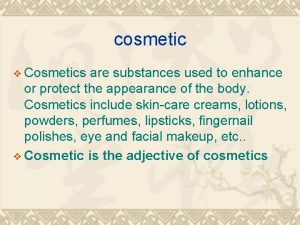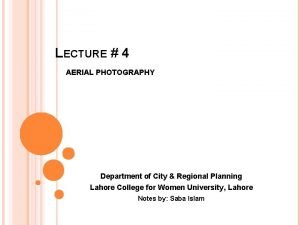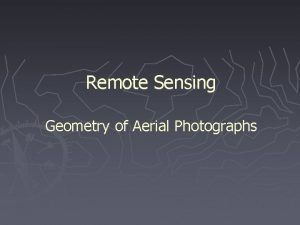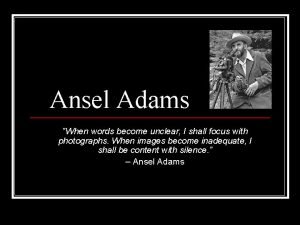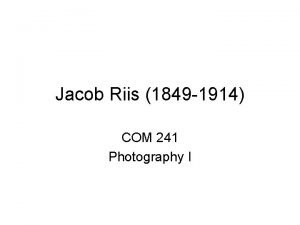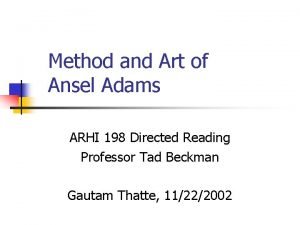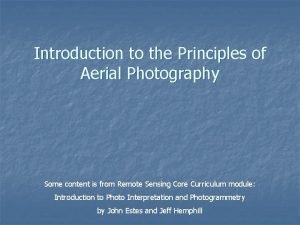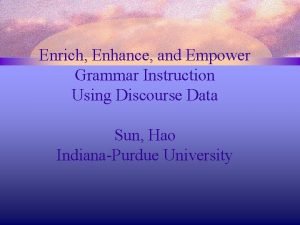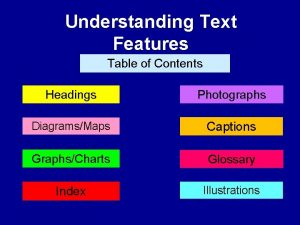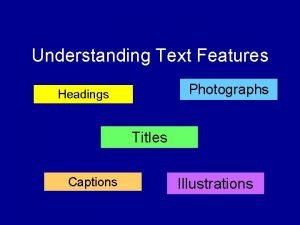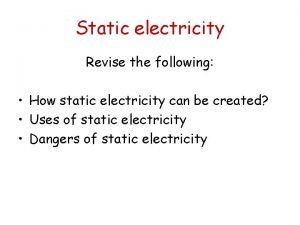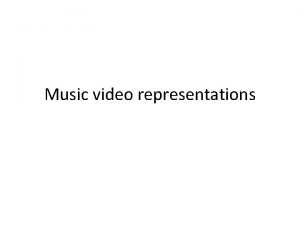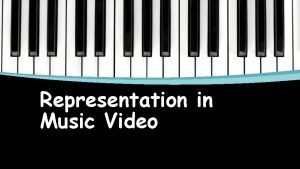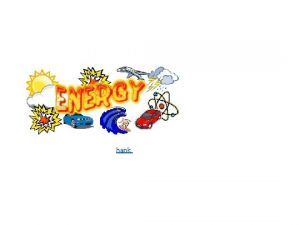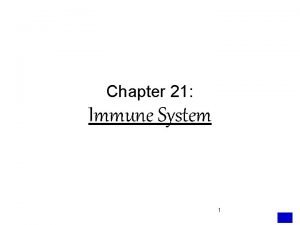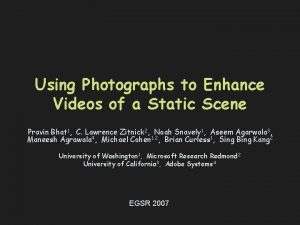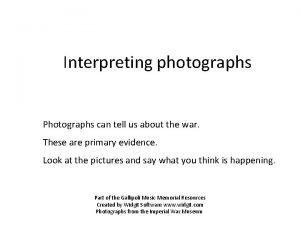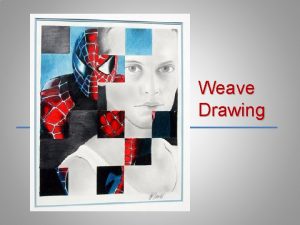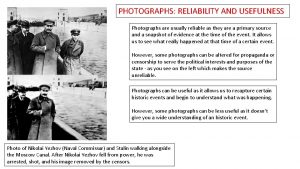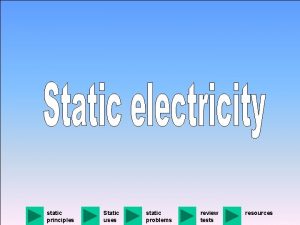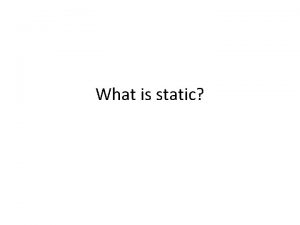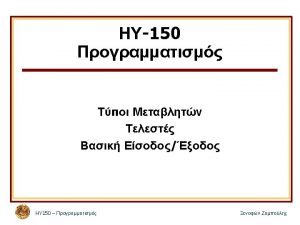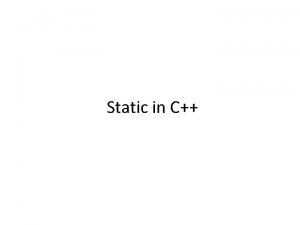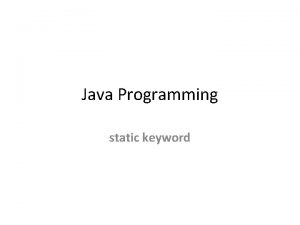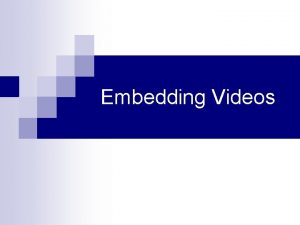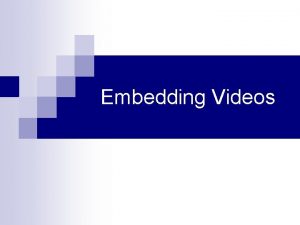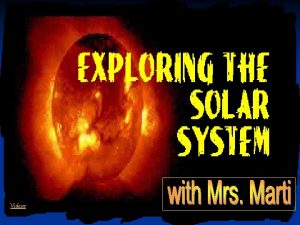Using Photographs to Enhance Videos of a Static
































- Slides: 32

Using Photographs to Enhance Videos of a Static Scene Pravin Bhat 1, C. Lawrence Zitnick 2, Noah Snavely 1, Aseem Agarwala 3, Maneesh Agrawala 4, Michael Cohen 1, 2, Brian Curless 1, Sing Bing Kang 2 University of Washington 1, Microsoft Research Redmond 2 University of California 3, Adobe Systems 4 EGSR 2007

An overview of Spacetime Fusion

Motivation • Low quality video Input Video

Motivation • Low quality video • Reconstructed video Input Video Reconstructed Video

Motivation • Low quality video • Reconstructed video – Reconstructed from photos – Good spatial reconstruction – Bad temporal reconstruction Input Video Reconstructed Video

Motivation • Spacetime Fusion result Input Video Spacetime Fusion Result

Motivation • Spacetime Fusion result – Spatial properties of reconstruction – Temporal properties of input video Input Video Spacetime Fusion Result

Spacetime Fusion • Define a 3 D gradient field

Spacetime Fusion • Define a 3 D gradient field – Spatial gradients from reconstruction – Temporal gradients from input video

Spacetime Fusion • Define a 3 D gradient field – Spatial gradients from reconstruction – Temporal gradients from input video – Key Idea • Temporal gradients defined between motion compensated temporal neighbors

Spacetime Fusion • Define a 3 D gradient field – Spatial gradients from reconstruction – Temporal gradients from input video – Key Idea • Temporal gradients defined between motion compensated temporal neighbors Video frame: t - 1

Spacetime Fusion • Define a 3 D gradient field – Spatial gradients from reconstruction – Temporal gradients from input video – Key Idea • Temporal gradients defined between motion compensated temporal neighbors Gt Video frame: t - 1 Gt(x, y, t) = V(x, y, t) - V(x, y, t - 1)

Spacetime Fusion • Define a 3 D gradient field – Spatial gradients from reconstruction – Temporal gradients from input video – Key Idea • Temporal gradients defined between motion compensated temporal neighbors Gt Video frame: t - 1 Gt(x, y, t) = V(x, y, t) - V(x - u, y - v, t - 1)

Spacetime Fusion • Define a 3 D gradient field – Spatial gradients from reconstruction – Temporal gradients from input video – Key Idea • Temporal gradients defined between motion compensated temporal neighbors • Increases compatibility between temporal gradients and spatial gradients

Spacetime Fusion • Define a 3 D gradient field – Spatial gradients from reconstruction – Temporal gradients from input video – Key Idea • Temporal gradients defined between motion compensated temporal neighbors • Increases compatibility between temporal gradients and spatial gradients • Integrate the 3 D gradient field

Spacetime Fusion • Integrating the gradient field Solve linear system: Av = b

Spacetime Fusion • Integrating the gradient field Solve linear system: Av = b Constraints: vx, y, t – vx-1, y, t = Gx(x, y, t) vx, y, t – vx, y-1, t = Gy(x, y, t) vx, y, t – vx-u, y-v, t = Gt(x, y, t)

Applications

Enhanced Exposure

Edit Propagation Input Video

Edit Propagation User Edits

Edit Propagation User Edits

Edit Propagation User Edits

Edit Propagation User Edits

Edit Propagation User Edits

Edit Propagation User Edits

Edit Propagation Edited Video

Super-Resolution

Conclusion • Spacetime fusion

Conclusion • Spacetime fusion – Combines spatial and temporal gradients from two different sources

Conclusion • Spacetime fusion – Combines spatial and temporal gradients from two different sources – Requires motion vectors for temporal source • stereo (static scenes) • flow (dynamic scenes)

Conclusion • Spacetime fusion – Combines spatial and temporal gradients from two different sources – Requires motion vectors for temporal source • stereo (static scenes) • flow (dynamic scenes) – Major applications • Enforcing temporal coherence • Transferring lighting information
 Cosmetics are substances that are used to enhance……..
Cosmetics are substances that are used to enhance…….. High oblique photographs
High oblique photographs Enhance life
Enhance life Define fashion merchandising
Define fashion merchandising Nnn hypno
Nnn hypno Geometry of an aerial photograph
Geometry of an aerial photograph And i shall
And i shall Jacob riis photographs analysis
Jacob riis photographs analysis Series of photographs
Series of photographs Enhance an image
Enhance an image Principles of aerial photography pdf
Principles of aerial photography pdf Enhance an image
Enhance an image Grammar to enrich and enhance writing
Grammar to enrich and enhance writing Enhance life
Enhance life Cspnet
Cspnet Raman wants to send a few photographs
Raman wants to send a few photographs Which process produces only identical offspring?
Which process produces only identical offspring? Take only photos leave only footprints
Take only photos leave only footprints Text features photographs
Text features photographs A salad to stimulate appetite
A salad to stimulate appetite Headings text features
Headings text features How is static electricity used to paint cars
How is static electricity used to paint cars Videos yandex search
Videos yandex search Representation in music videos
Representation in music videos Chacn
Chacn Diario personal con grabaciones sonoras
Diario personal con grabaciones sonoras Videos
Videos Representation in music videos
Representation in music videos Acuity training videos
Acuity training videos Bill nye energy transformation
Bill nye energy transformation The purpose of music videos
The purpose of music videos Nnx videos
Nnx videos Physiology videos
Physiology videos
